Between 1218 and 1220, the Mongols under Jenghis Khan swept into Western
Asia. Though their invasion was neither as complete nor as immediate as
is often believed, by the late 13th century Mongol states ruled all the
way from Mesopotamia to China. In the field of painting the Mongol invasions
had important consequences. In Mamluk Syria and Egypt, the Mesopotamian
tradition of manuscript illustration was concentrated. In Anatolia, Mongol
overlordship after 1243 stifled architectural and artistic patronage.
Most of the states in Anatolia and Central Asia were not fruitful
in terms of manuscripts during that time, therefore it was Iran and Mesopotamia
that major artistic developments occured, on a scale which far surpassed
anything of earlier centuries. The schools of Tabriz and Shiraz are presented
in this page. Most of the depicted illustrations are from Shah-nama's
(book of kings) of different rulers and important personalities including
Zal, Simurgh, Iskandar, Isfandiyar, Munichir and Bahram Gur.
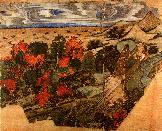
|
Summer Landscape
From the Sarai Albums.
Tabriz, middle of 14th century.
Hazine 2153, folio 68a
|
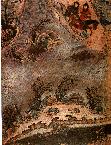
|
Winter Landscape
From the Sarai Albums.
Tabriz, middle of 14th century.
Hazine 2153, folio 28a
|

|
Abduction of Zal by the Simurgh
Shah-nama.
From the Sarai Albums
Tabriz, ca. 1370
Hazine 2153, folio 23a
|
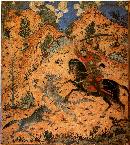
|
Isfandiyar fights with the Wolves
Shah-nama.
From the Sarai Albums
Tabriz, ca. 1370
Hazine 2153, folio 73b
|
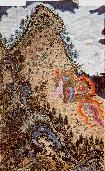
|
The Simurgh taking Zal back to its nest on Mount Demavend
Shah-nama (Firdawsi's 'Book of Kings').
Tabriz, 1370.
Hazine 2153, folio 23a
|
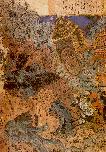
|
Iskandar and the wolves in a winter landscape
Shah-nama (Firdawsi's 'Book of Kings').
Shams-al Din, Tabriz, 1370.
Hazine 2153, folio 157a
|
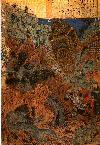
|
Isfandiyar fights with the Dragon
Shah-nama.
From the Sarai Albums
Tabriz, second half of 14th century
Hazine 2153, folio 157a
|
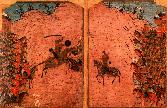
|
Episode from a Battle between the Iranians and the Turanians
Shah-nama.
From the Sarai Albums
Tabriz, second half of 14th century
Hazine 2153, folio 52b-53a
|
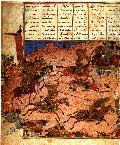
|
King Minuchihr of Iran kills the fleeing Turanians
Shah-nama.
From the Sarai Albums
Tabriz, second half of 14th century
Hazine 2153, folio 102a
|

|
Bahram Gur's Combat with the Dragon
Shah-nama.
Shiraz, 1370.
Hazine 1151, folio 206b
|









